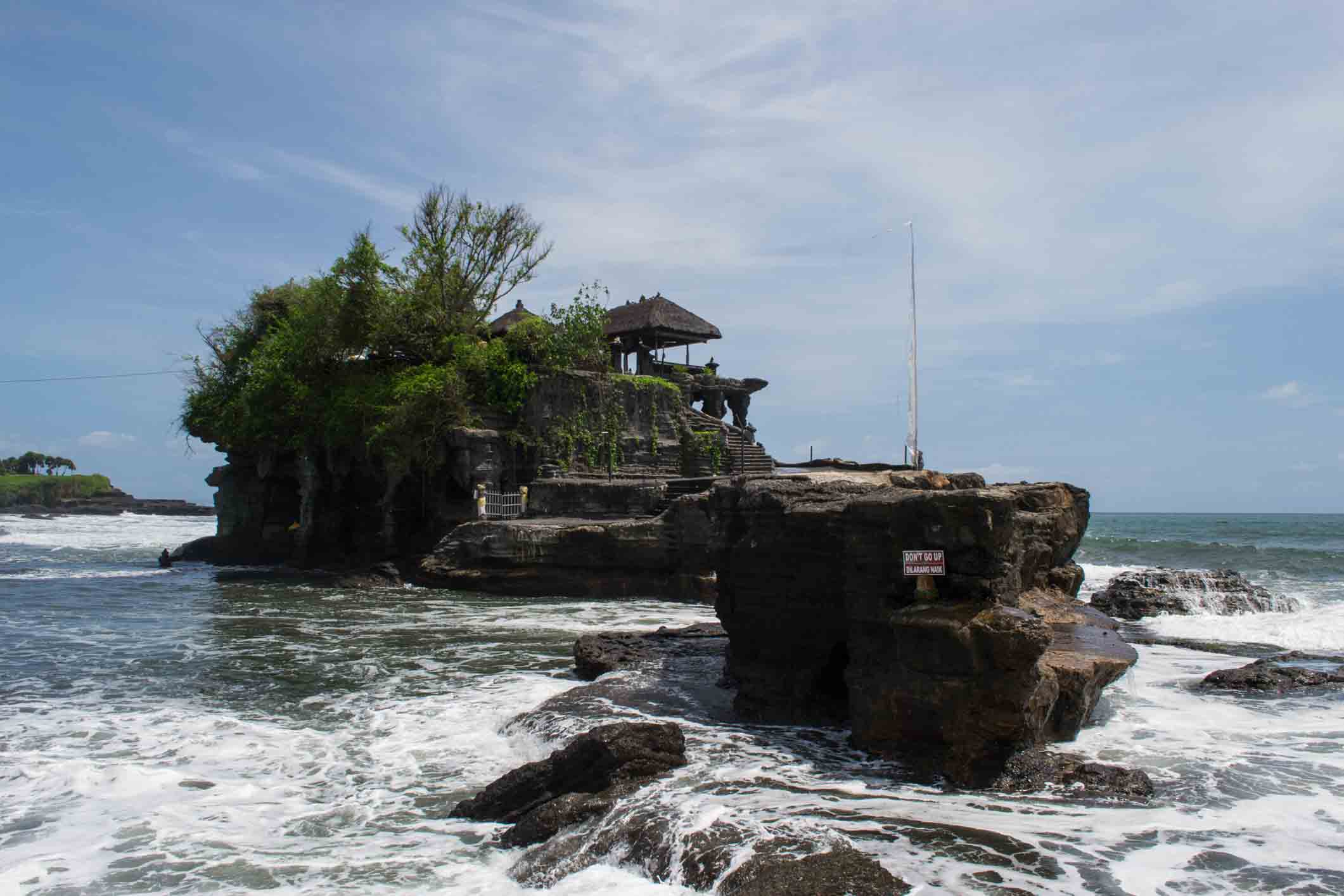Pura Tanah Lot Temple
Find out about the top-ranking facts and myths that have been circulating about Pura Tanah Lot Temple for ages.
1. 8 Holy Temples Surround Tanah Lot Area
Now that you know this fact, around this area consists of Pura Luhur Tanah Lot, and eight temples operate as shrines. These eight temples are in fact Tri Antaka Monument, Penataran Temple, Jero Kandang Temple, Pura Penyawang, Batu Mejan Temple, Enjung Galuh Temple, Batu Bolong Temple, and Pura Pakendungan.
2. Dang Hyang Nirartha Built Them
A popular legend on Tanah Lot goes something like this: Once, an eminent Brahmin coming from Java wanted to spread Hindi religion in Bali. This esteemed Brahmin called Bhagawan Dang Hyang Nirartha.
The building of Tanah Lot started with instructions shown from the sacred sun rays shining from the South Sea direction.
3. The Holy Snake Guards It
Anyone visiting Tanah Lot, would have seen a sacred inside the sea temple. The Tanah Lot's holy snake resides in the Cave of the Holy Snake. The holy snake's existence is a major reason which attracts several visitors. The Tanah Lot's sacred snake is supposed to be the incarnation of the scarf belonging to Dang Hyang Nirartha.
This sacred snake, though black and white, is extremely poisonous. But locals have the belief that if tourists have good intentions while visiting this temple, the sacred snake does not harm them.
4. Ceremony Performed Once Every 210 Days
Another tidbit about Tanah Lot is there exist ceremonies known as either Piodalan or Pujawali that are carried out every 210 days. This ceremony happening at Tanah Lot takes place four days following Kuningan Day. The local community and Hindus come to perform the holy ceremony in Tanah Lot.
In this particular ceremony, all Hindus pray for the safety and welfare of life. Prior to the ceremony, these Hindus must first wash their faces in the Tanah Lot Cave with holy water to be allowed to pray.
5. There is a Sacred Spring
The temple existing where there's fresh water while the sea surrounds it might for sure shock several strangers. But that’s how things are there, for you'll notice a sacred spring situated in the area where Tanah Lot Temple sits. This same sacred spring can be seen also in the holy water cave. According to legend, Tanah Lot's holy spring can heal different illnesses.
6. Renovation has Improved Tanah Lot
Were you aware that one of Bali's most popular attractions has been renovated? The area in which Tanah Lot Temple stands is vulnerable to abrasion because of ocean waves.
Thus, this renowned temple located in Bali has gone through a phase of renovation. The first one occurred in 198. Additional efforts for renovating and protecting Tanah Lot continued until February 2003.
7. Touring Tanah Lot as a Couple Could Cause a Breakup?
Besides the striking variety of information of Tanah Lot, one other popular myth exists that locals tell visitors. The myth claims that if you ask a boyfriend or girlfriend to come as a couple to Tanah Lot, you're endangering your relationship. Despite this, several couples defiantly choose to conduct pre-wedding photos here.
8. Near to Melasti Beach Waterfall Tourist Attraction
This temple happens to lie close to the Melasti Beach Waterfall. Melasti Beach Waterfall's water falls from a cliff before plunging straight into the beach. In addition to the waterfall's beauty, you could admire the amazing vista of Melasti Beach, not far from Tanah Lot.
9. A Charming Site to Behold Sunset
For those who love catching the stunning sights of sunset, come to the Tanah Lot Temple during the evening with your camera.
Tanah Lot is the ideal place to watch the breathtaking sunset. If you wish to observe for yourself the most incredible sunset at Tanah Lot, stop by one hour prior to sunset. You won't regret it!
10. Its Silhouette Ranks Highly as Bali's Popular Icon
Most Famous Must-See Tourist Attractions in Indonesia

